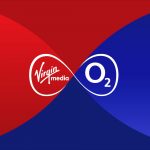Vodafone Delivers Best 4G UK Mobile Video Streaming Experience
Vodafone has been named by crowd-sourced testing company OpenSignal as the best Mobile Network Operator in the United Kingdom for streaming video over a data (3G / 4G mobile broadband) connection, although they were very closely followed by arch rival EE (BT).
The results flow from an extended look at the company’s previous analysis of video streaming performance across the world, which ranked countries on a scale of 0-100, taking into account video load time, stalling rates during video playback and picture quality (this was derived from an ITU-based approach for determining video quality).
Just 11 of the 69 countries they tested earned a “Very Good” rating on their video experience scale (here), meaning mobile video loaded quickly and rarely stalled even at higher resolutions. In that report the UK came a little above mid-table with a “Good” score of 60.05 out of 100. The scoring ranges were: 75-100 Excellent, 65-75 Very Good, 55-65 Good, 40-55 Fair and 0-40 Poor.
Advertisement
However the original report didn’t break that data down by country to show how each primary operator performed. Thankfully OpenSignal has now produced those results, including for the UK, although it’s worth nothing that there isn’t a lot of difference between the operators and all scored inside the “Good” range.

In fairness, we’re not entirely sure how useful this sort of study is for consumers because internet video streaming quality / performance is not simply a reflection of service speed. Indeed a lot of different factors can impact it, such as the data allowances, Traffic Management policies or package choices within particular networks. Not to mention any problems with the streaming server itself.
The streaming services may also place natural limits (based partly on codec and video resolution) on the speed required to stream video at a specific quality level and different people may subscribe to take different levels of quality. For example, a High Definition (HD) video stream on Netflix only needs up to 5Mbps, while UltraHD (4K) might need up to 25Mbps, but to get 4K you have to pay extra for the top plan.
Advertisement
The results can also be impacted by video codecs and compression (i.e. bit-rates vary as the video content changes) and in a mobile environment they can also be impacted as you move around (e.g. the signal quality may fall as you move deep indoors or underground) or by your choice of 4G handset / device (some can’t do full HD or 4K streaming on popular services).
On top of that we have the added complexity of using app-based crowd-sourced data collection and analysis, which among many other things makes it difficult to establish a solid baseline to compare against. On this point we’d trust OpenSignal’s data more than most, but there are still so many variables involved that we’d take such results with a pinch of salt.
Mark is a professional technology writer, IT consultant and computer engineer from Dorset (England), he also founded ISPreview in 1999 and enjoys analysing the latest telecoms and broadband developments. Find me on X (Twitter), Mastodon, Facebook, BlueSky, Threads.net and Linkedin.
« ISP Sky Broadband Abandons Derbyshire UK FTTH Broadband Trial

















































Comments are closed